
call me a scrooge but i have a problem with "goodie bags". the sentiment is there and i appreciate that; you go to a birthday party, bring a gift, have fun, eat cake, play with friends and your child leaves with a party favor.
Viewing: Blog Posts Tagged with: global warming, Most Recent at Top [Help]
Results 26 - 50 of 72
Blog: THE ACME SHARING COMPANY (Login to Add to MyJacketFlap)
JacketFlap tags: acme holiday, global warming, for all ages, birthday project, Add a tag
Blog: The Children's Book Review (Login to Add to MyJacketFlap)
JacketFlap tags: Global Warming, The Magic School Bus, Earth Hour, Environment & Ecology: Earth conscience, Bruce Degen, Joana Cole, Seymour Simon, Smithsonian Institute, Ages Four to Eight: Books for pre-school to second grade, Ages Nine to Twelve: Books for third through sixth grade, Add a tag
Earth Hour is on March 27—that's tomorrow—at 8:30pm (local time). Here are a couple of book suggestions that make the hot-topic of climate change, kid friendly:
Add a CommentBlog: La Bloga (Login to Add to MyJacketFlap)
JacketFlap tags: Barack Obama, terrorists, Paul Hawken, quit smoking, 2010 resolutions, Malcolm X, lose weight, homeland safe, global warming, Add a tag
humbug: something designed to deceive or mislead; nonsense or drivel
On the second day of 2010, the pressure is on: "Did you make a resolution? Are you keeping it? What's yours?" Such questions fade as the month passes, but for the moment, it's tradition to find one more thing to stress about. As if we needed something else!
This isn't going to be about my resolutions that you could care less about: you've got enough crosses and crutches of your own to bear. What it's about is resolutions that should be tossed into history's trash bin because they're less important than we think or we need to instead find something more meaningful. To begin with--humbug to New Year's resolutions!
Humbug to losing weight If you're obese or overweight, make out your will. But first find a BMI calculator that understands Chicanos are mostly shorter and stockier than Anglos. Don't go here, because whether I enter I'm Hispanic or Caucasian, it still gives me the same message: "Your BMI is 30.5 - obese."
If you're obese or overweight, make out your will. But first find a BMI calculator that understands Chicanos are mostly shorter and stockier than Anglos. Don't go here, because whether I enter I'm Hispanic or Caucasian, it still gives me the same message: "Your BMI is 30.5 - obese."
If you want to lose weight, go here for another book that would be good to read but that you'll forget as soon as you smell the queso-grasa-carne homemade enchiladas Abuela's cooking.
Humbug! If you want to lose weight, stop eating all the good stuff. But remember losing too much will eliminate love handles and, well, you know what those are good for.
Humbug to smoking being addictive
Cigarette companies want us to believe smoking is worse than a habit--that it's addictive. All a smoker's got to do to realize this is humbug is to take a cross-country flight. Sure, when you get to your destination the first thing you do is run to the tarmac or curb to light up. But, fact is, you made it there, and the nicotine DTs were tolerable. Try doing that to a heroin addict and see whether his is "just" a habit.
If you do want to quit, don't follow the advice of Lisa's advice on a quit-smoking commercial: "You're not my crutch. I don't need a crutch." I don't know what planet Lisa lives on, but it's not Earth. Lisa must not have been pink-slipped or downsized, never did a subprime on her house, doesn't have a kid condemned to 20 years of college loan payments, never tried that cross-country flight that a terrorist might also take, doesn't have sobrinos in Iraq, Afghanistan, Pakistan or Nextistan, and her planet must not be Pluto (if you still call it a planet).
Smoking's not healthy, but it might be less dangerous than Lisa's medicine that carries this Most important safety information:
"If you notice agitation, hostility, depression, or changes in behavior, thinking, or mood atypical for you, or you develop suicidal thoughts or actions, anxiety, panic, aggression, anger, mania, abnormal sensations, hallucinations, paranoia, or confusion, stop taking it. Also depression or other menta
Blog: Mattias (Login to Add to MyJacketFlap)
JacketFlap tags: global warming, moleskine, Add a tag
 the Expando pen is a breakthrough in pen technology, especially developed for the upcoming climate meeting in Copenhagen.
the Expando pen is a breakthrough in pen technology, especially developed for the upcoming climate meeting in Copenhagen.
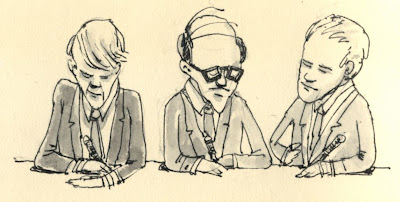 Designed to grow (or shrink) depending on what kind of agreement it signs
Designed to grow (or shrink) depending on what kind of agreement it signs it brings competition back in signing protocols, and give your fellow signers a bad case of pen if they fail to meet the challenge..
it brings competition back in signing protocols, and give your fellow signers a bad case of pen if they fail to meet the challenge..
 not to mention the goodwill it will bring you when returning from Copenhagen...
not to mention the goodwill it will bring you when returning from Copenhagen...
Blog: OUPblog (Login to Add to MyJacketFlap)
JacketFlap tags: UK, global warming, United Nations, VSI, climate change, very short introduction, copenhagen, COP15, mark maslin, Science, Current Events, Geography, A-Featured, A-Editor's Picks, Add a tag
By Kirsty McHugh, OUP UK
Next week sees the beginning of the United Nations Climate Change Conference, held in Copenhagen. The aim of the conference is to reach an ambitious global agreement including all the countries in the world. This week OUPblog will be posting a series of Countdown to Copenhagen blogs from some of our authors. Kicking things off is Professor Mark Maslin, who is the Head of Department and Director of the Environment Institute at University College London, and the author of Global Warming: A Very Short Introduction.
Climate change is the most important science issue of the 21st century, challenging the very structure of our global society. The COP 15 meeting at Copenhagen provides a real opportunity for global society to decide how to deal with this major threat. We already know that atmospheric carbon dioxide has risen from a pre-industrial level of 280 ppmv to 389 ppmv by 2009. This has already caused climate change; with clear evidence for a 0.75°C rise in global temperatures and 22 cm rise in sea level during the 20th century. In the last 150 years the twelve warmest years on record have all occurred in the last thirteen years: 1998 was the warmest, followed by 2005, 2002, 2003 and 2004, while 2008 was the 10th warmest year on record. The threat of climate change has been assessed in the Intergovernmental Panel on Climate Change (IPCC) 2007 synthesis report. Based on 23 complex climate models they predict that global temperatures by 2100 could rise by between 1.1°C and 6.4°C (best estimates being 1.8˚C to 4˚C). Sea level could rise by between 28 cm and 79 cm, more if the melting of Greenland and Antarctica accelerates. The potentially effects of climate change on human society are devastating, including drastic changes in global health, agriculture, the economy, water resources, coastal regions, storms and other extreme climate events, and biodiversity. The IPCC states that the scientific evidence for global warming is unequivocal and there is very high confidence that this is due human activity. This view is supported by a vast array of learned organisations, including the Royal Society and American Association for the Advancement of Science. This is why the negotiations at COP15 at Copenhagen are so important.
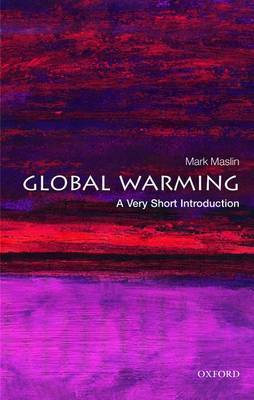 I believe a legally binding agreement to limited global warming to a maximum of 2˚C above pre-industrial temperatures is required at Copenhagen. This has profound implications as the science tell us this is equivalent to putting a total of a trillion tonnes of carbon in the atmosphere. As we have already emitted half a trillion tonnes the political challenge at Copenhagen and COP16 in Mexico is how to limit the world to just another half a trillion tonnes of carbon. The first challenge is the essential involvement of Developing countries in long-term carbon reduction targets because the scale their current and future pollution. Of course this will only occur is the rich countries such as the EU and USA lead the way with stringent cuts. It is also moral imperative, however, that people in the poorest countries have the right to develop and to obtain the same life style we currently enjoy. We also need massive investment in alternative/renewable power sources and low carbon technology. One of the key ways that Developing Countries may be encouraged to achieve reduction targets given a positive lead by the western world would be through carbon trading and other financial incentives. The s
I believe a legally binding agreement to limited global warming to a maximum of 2˚C above pre-industrial temperatures is required at Copenhagen. This has profound implications as the science tell us this is equivalent to putting a total of a trillion tonnes of carbon in the atmosphere. As we have already emitted half a trillion tonnes the political challenge at Copenhagen and COP16 in Mexico is how to limit the world to just another half a trillion tonnes of carbon. The first challenge is the essential involvement of Developing countries in long-term carbon reduction targets because the scale their current and future pollution. Of course this will only occur is the rich countries such as the EU and USA lead the way with stringent cuts. It is also moral imperative, however, that people in the poorest countries have the right to develop and to obtain the same life style we currently enjoy. We also need massive investment in alternative/renewable power sources and low carbon technology. One of the key ways that Developing Countries may be encouraged to achieve reduction targets given a positive lead by the western world would be through carbon trading and other financial incentives. The s
Blog: Mattias (Login to Add to MyJacketFlap)
JacketFlap tags: global warming, moleskine, Add a tag
Sometime new ideas take it's time until they get fully accepted, here's some examples.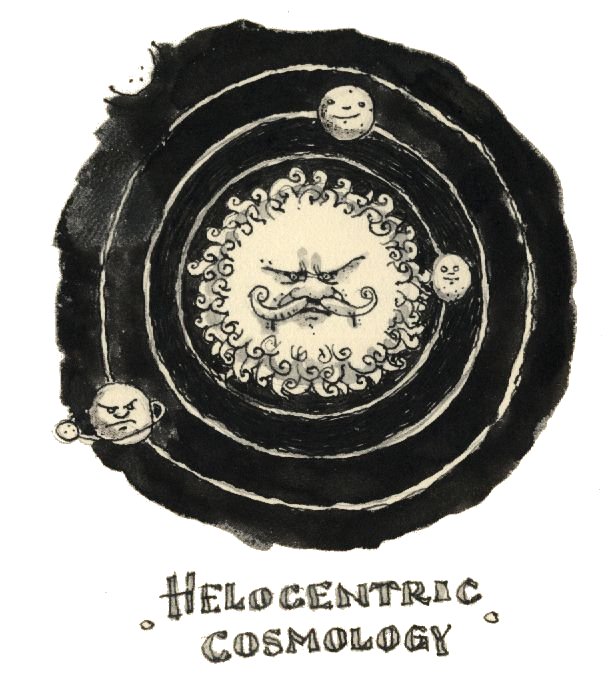 1543-1758
1543-1758
 1859-still being disputed
1859-still being disputed
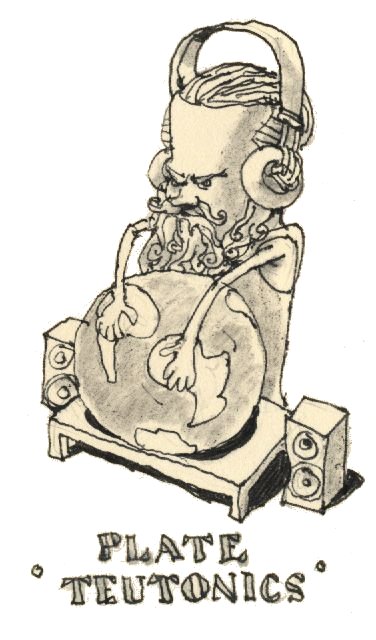 1912-1970
1912-1970
 1600-1859
1600-1859
 ?
the question is, do we have the time to argue about global warming?
?
the question is, do we have the time to argue about global warming?
Blog: Mattias (Login to Add to MyJacketFlap)
JacketFlap tags: global warming, moleskine, Add a tag
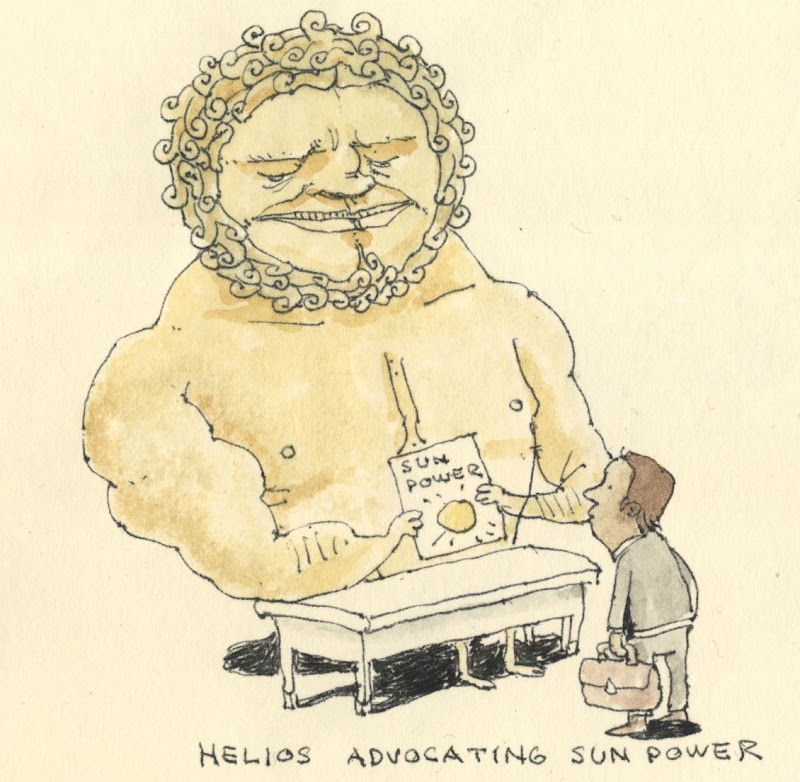 Helios advocating sun power
Helios advocating sun power
 Eros never misses a target
Eros never misses a target
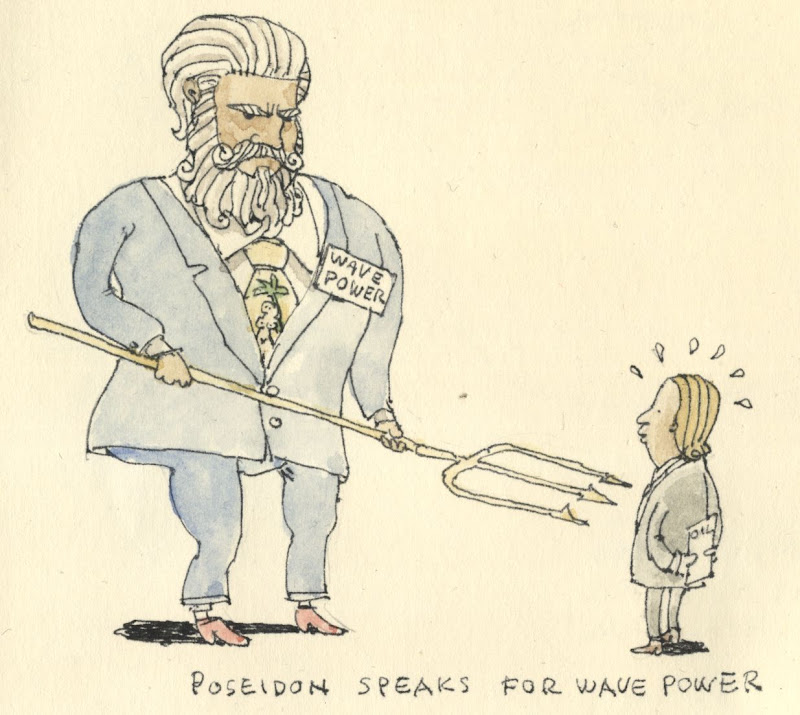 Poseidon speaks for wave power
Poseidon speaks for wave power
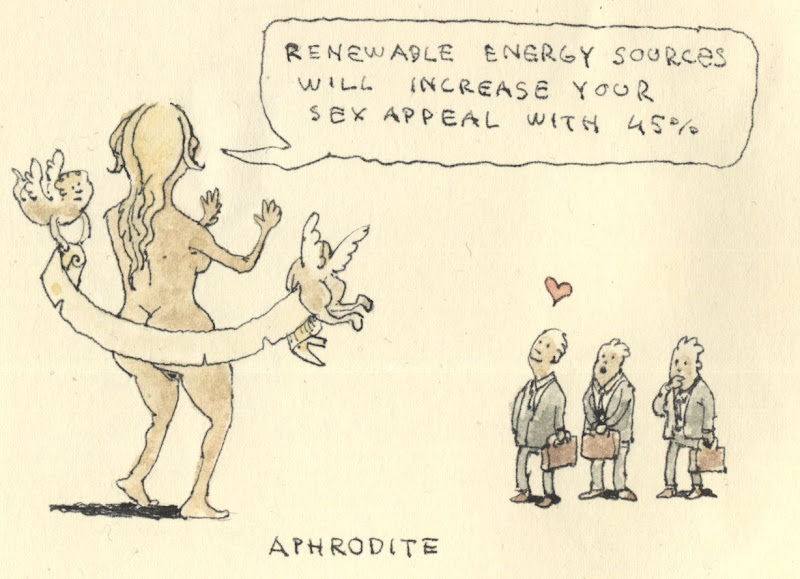 Aphrodite speaks to the heart of men
Aphrodite speaks to the heart of men
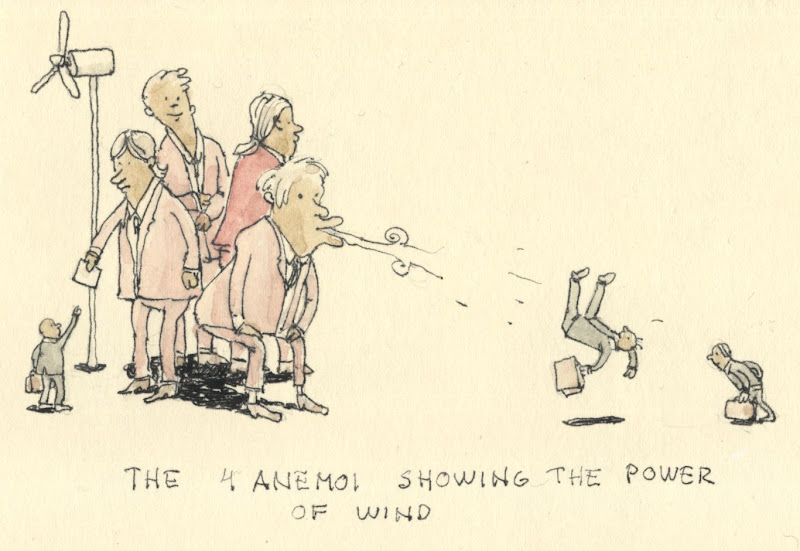 the four Anemoi (wind gods) shows the awesome powers of wind.
the four Anemoi (wind gods) shows the awesome powers of wind.
 Dionysus endorsing ethanol
Dionysus endorsing ethanol
Blog: Mattias (Login to Add to MyJacketFlap)
JacketFlap tags: global warming, moleskine, Add a tag
 Earth is at peril
Earth is at peril
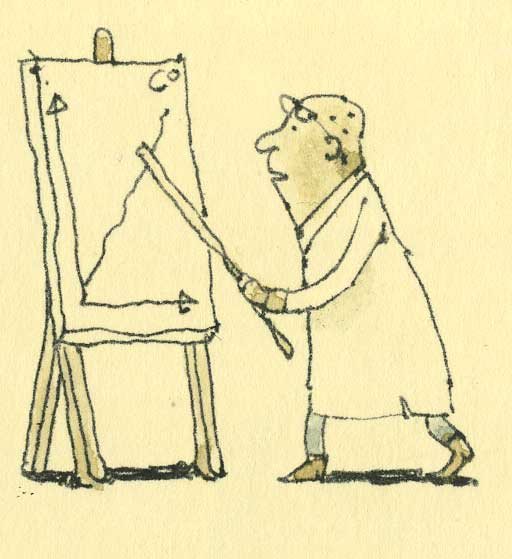 According to a majority of scientists the earth is getting warmer
According to a majority of scientists the earth is getting warmer
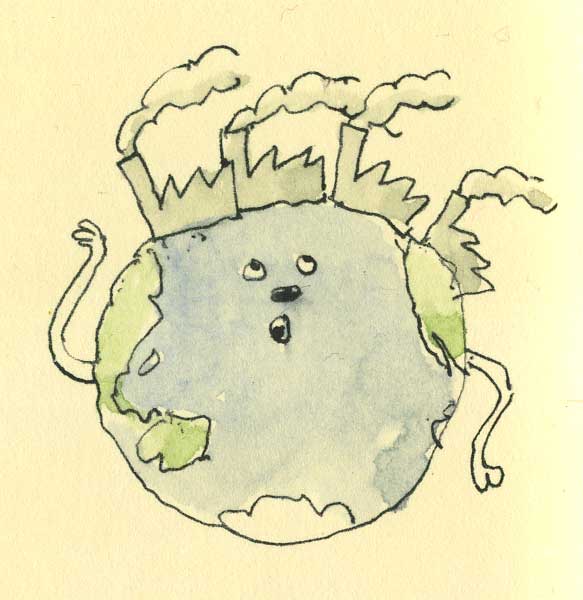 the main culprit in this warming is, according to them, humans burning of fossil fuels
the main culprit in this warming is, according to them, humans burning of fossil fuels
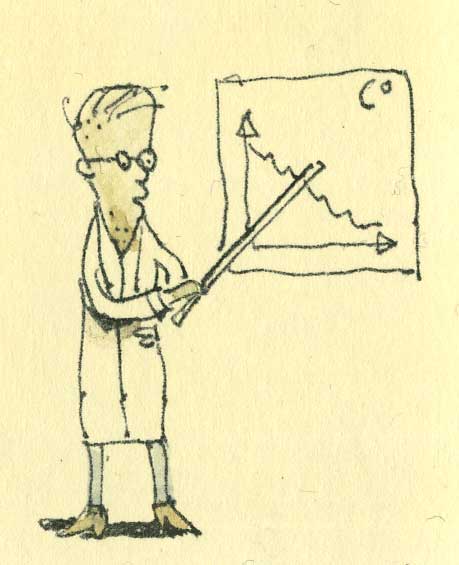 Other scientist reading the statistics in another way
Other scientist reading the statistics in another way
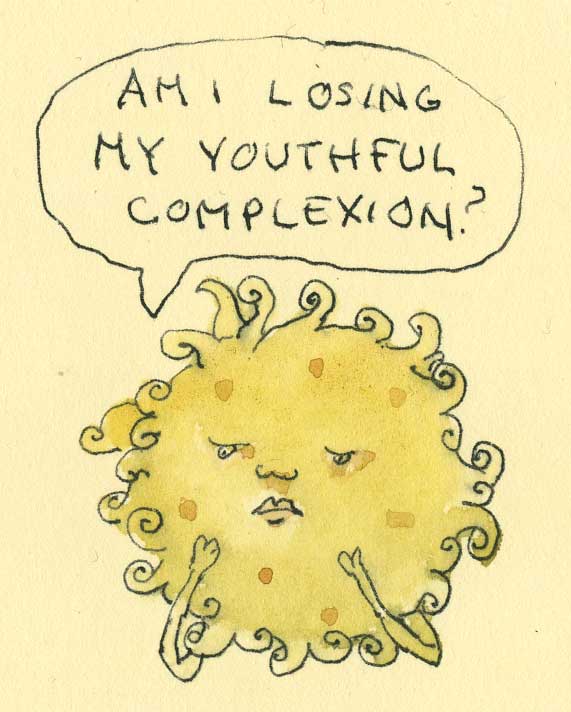 say that is due to the sun and that we might be going into a colder spell
say that is due to the sun and that we might be going into a colder spell
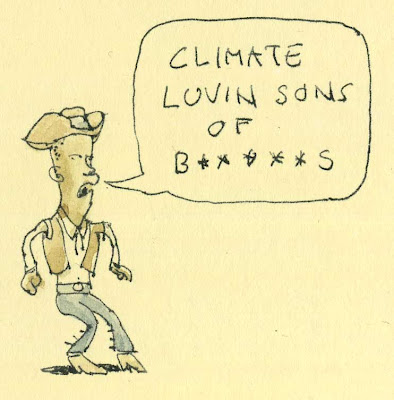 Other skeptics on climate change use a more colorful vocabulary
Other skeptics on climate change use a more colorful vocabulary
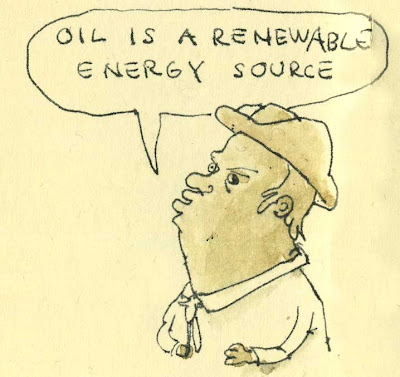 And some have rather far flung theories on energy sources
And some have rather far flung theories on energy sources
 Those who believe that climate change is a fact, sometimes have pretty radical solutions to the problems
Those who believe that climate change is a fact, sometimes have pretty radical solutions to the problems
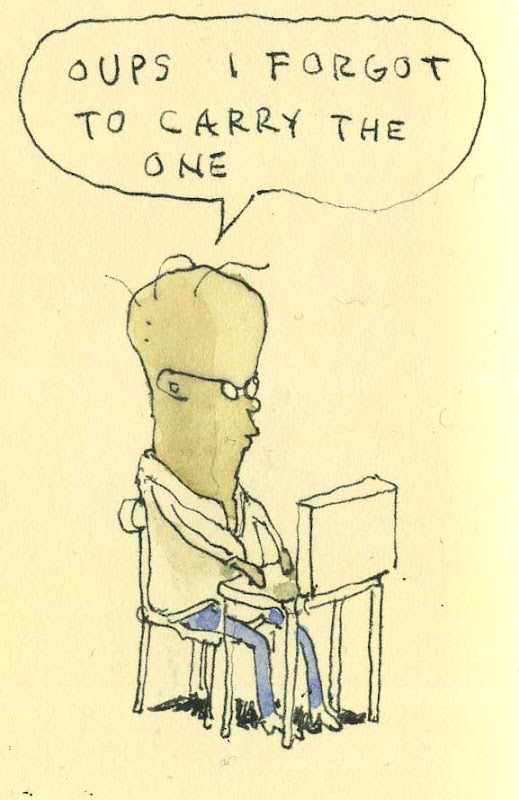 But even if all the people who think that climate change is a fact and that the earth is in utter danger....
But even if all the people who think that climate change is a fact and that the earth is in utter danger....
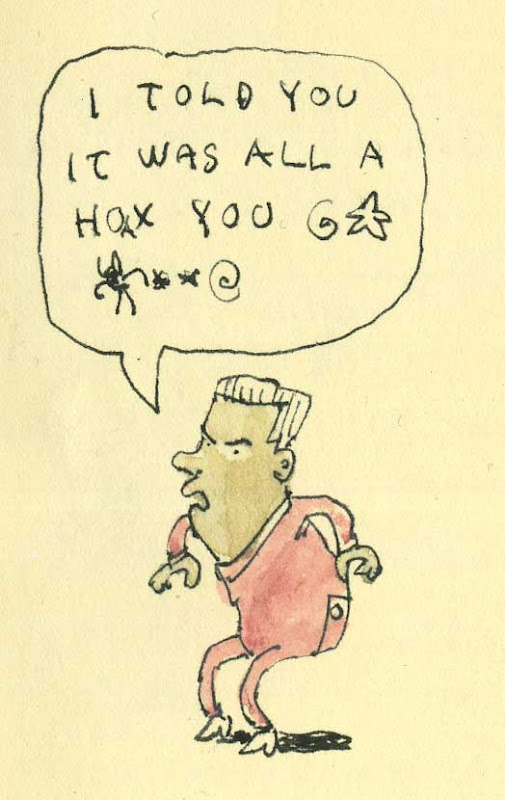 and all the skeptics who think that global warming is the greatest hoax in human history are right
and all the skeptics who think that global warming is the greatest hoax in human history are right
 wouldn't a shift to a more sustainable way of living, less stressful to the environment, be a good thing? What's there to loose in gearing the earth towards sustainable energy sources. Ponder if 1.3 billion Chinese would live the extravagant lifestyle of your average Californian...
wouldn't a shift to a more sustainable way of living, less stressful to the environment, be a good thing? What's there to loose in gearing the earth towards sustainable energy sources. Ponder if 1.3 billion Chinese would live the extravagant lifestyle of your average Californian...
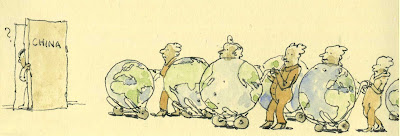 they would need six more earths to sustain them and who wants to explain to them that they can't?
Read more at www.blogactionday.org/ and at climatechange.thinkaboutit.eu/
and then wind down at listen to some really interesting lectures at the 21th century school
they would need six more earths to sustain them and who wants to explain to them that they can't?
Read more at www.blogactionday.org/ and at climatechange.thinkaboutit.eu/
and then wind down at listen to some really interesting lectures at the 21th century school
Blog: Mattias (Login to Add to MyJacketFlap)
JacketFlap tags: global warming, moleskine, Add a tag
A good house doesn't grow on a tree
 Maybe the biggest climate culprit in the world is the buildings we live and work in. Let's hope for more green architecture in the future and more energy effectivity in the buildings we already have.
Maybe the biggest climate culprit in the world is the buildings we live and work in. Let's hope for more green architecture in the future and more energy effectivity in the buildings we already have.
Blog: Mattias (Login to Add to MyJacketFlap)
JacketFlap tags: global warming, moleskine, Add a tag
Fly on the wings of love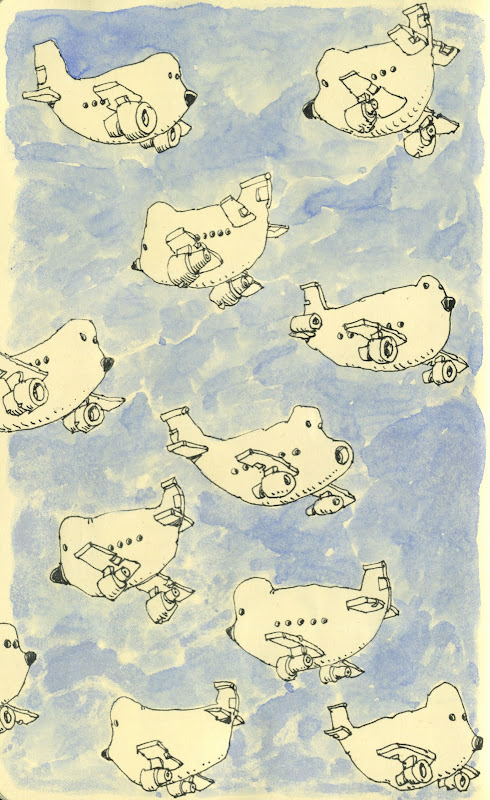 Aircraft generate almost as much carbon dioxide as the entire African continent produces and air travel is on a constant rise.
Aircraft generate almost as much carbon dioxide as the entire African continent produces and air travel is on a constant rise.
Blog: Mattias (Login to Add to MyJacketFlap)
JacketFlap tags: global warming, moleskine, Add a tag
Surf's kind of crowded these days
 The growing population is of course not a only a problem when coming to the climate, feeding up to 12 billion people puts hard strains on the earth. Curing Malaria, Aids and other tropical diseases is essential in putting a curb on the population explosion and education, especially giving girls the possibility to study.
The growing population is of course not a only a problem when coming to the climate, feeding up to 12 billion people puts hard strains on the earth. Curing Malaria, Aids and other tropical diseases is essential in putting a curb on the population explosion and education, especially giving girls the possibility to study.
Blog: Mattias (Login to Add to MyJacketFlap)
JacketFlap tags: global warming, moleskine, Add a tag
the Discreet flatulence of the meet industry
 Approximate one fifth of all greenhouse gases comes from animal production yet meat production and consumption is one the rise globally.
Approximate one fifth of all greenhouse gases comes from animal production yet meat production and consumption is one the rise globally.
Blog: Mattias (Login to Add to MyJacketFlap)
JacketFlap tags: global warming, moleskine, Add a tag
the love of oil
 Sweden has done relatively much when coming to renewable energy sources and energy effectivity, Swedish consumers compensates these gains by driving around with Europe's most gasoline thirsty automobiles. Apart from using large cars half of the car trips taken in Sweden are under 5 km in length, a length that makes going by bicycle a faster alternative.
Sweden has done relatively much when coming to renewable energy sources and energy effectivity, Swedish consumers compensates these gains by driving around with Europe's most gasoline thirsty automobiles. Apart from using large cars half of the car trips taken in Sweden are under 5 km in length, a length that makes going by bicycle a faster alternative.
Blog: Mattias (Login to Add to MyJacketFlap)
JacketFlap tags: story, global warming, Add a tag
Introducing a completely new way of producing electricity
 In a portable yet sexy design it works both while walking or when traveling on wheels
In a portable yet sexy design it works both while walking or when traveling on wheels
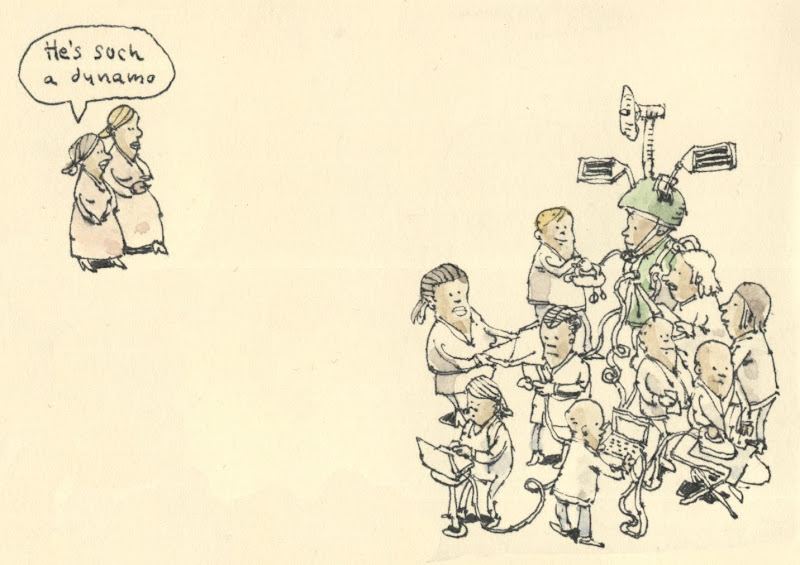 Be the most connected person in your neighborhood. Thanks to the ample amount of power cords everyone will want to be your friend.
Be the most connected person in your neighborhood. Thanks to the ample amount of power cords everyone will want to be your friend.
 Team up and commute king style.
Team up and commute king style.
 Can be used even when there's no wind, bring it to the football game...
Can be used even when there's no wind, bring it to the football game...
 And indoors while attending a cocktail party
And indoors while attending a cocktail party
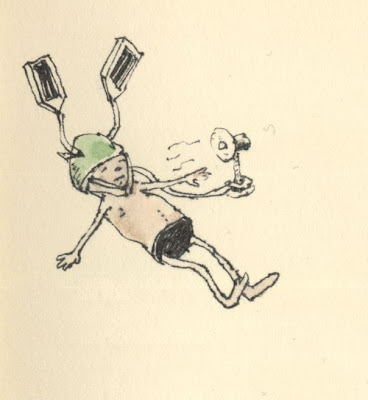 While at the beach it brings the possibility to a cold breeze
While at the beach it brings the possibility to a cold breeze
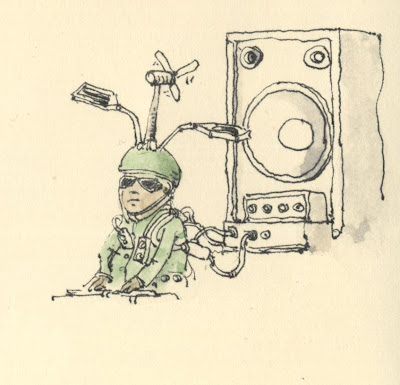 And works great while deejaying
Read more on global warming at: http://climatechange.thinkaboutit.eu/
And works great while deejaying
Read more on global warming at: http://climatechange.thinkaboutit.eu/
Blog: OUPblog (Login to Add to MyJacketFlap)
JacketFlap tags: Health, Technology, Politics, Science, global warming, environment, A-Featured, climate change, governement, David Orr, Add a tag
David W. Orr is the Paul Sears Distinguished Professor of Environmental Studies and Politics at Oberlin College. His new book, Down to the Wire: Confronting Climate Collapse, is an eloquent
assessment of climate destabilization and an urgent call to action. In the excerpt below we learn about one challenge our government will need to address.
…the hardest tests for our Constitution and democracy are just ahead and have to do with the relationship between governance, politics, and the dramatic changes in Earth systems now under way. Human actions have set in motion a radical disruption of the biophysical systems of the planet that will undermine the human prospect, perhaps for centuries. The crucial issues will be decided by how and how well we conduct the public business in the decades and centuries ahead, and now on a planetary scale. Of the hard realities of governance ahead, five stand out.
The first challenge is that posed by climate change driven by the combustion of fossil fuels and changes in land management. The Fourth Assessment Report from the Intergovernmental Panel on Climate Change (2007), the Stern Review (Stern, 2007), the research on the effects of global change on the United States carried out by the National Science and Technology Council (2008), and other scientific evidence indicate that our future will be characterized by:
- -Rising sea levels by perhaps, eventually, as much as five to six meters or more, but no one knows for certain. What is known is that virtually everything frozen on the planet is melting much more rapidly than anyone though possible even a few years ago.
- -Higher temperatures almost everywhere, but concentrated int he northern latitudes, melting permafrost, an boreal forests turning from weak sinks for carbon into sources of carbon and methane.
- -More drought and severe heat waves, particularly in mid-continent areas.
- -Tropical diseases spreading into regions with previously temperate climates and emergence of new diseases.
- -Degradation of forests and ecosystems due to higher temperatures, drought, and changing diseases.
- -Rapid decline of marine ecosystems threatened by acidification and higher surface water temperatures.
- -Larger (and possibly more frequent) hurricanes, tornadoes and fires.
- -Loss of a significant fraction of biological diversity.
Given our past emission of heat-trapping gases, much of this is simply unavoidable. Regardless of what we do now, the Earth will warm by another half to a full degree centigrade by midcentury bringing us uncomfortably close to what many scientists believe to be the threshold of disaster. The climate system has roughly a 30-year thermal lag between the release of heat-trapping gasses and the climate-driven weather events that we experiences. Hurricane Katrina, for example, grew from a Class I storm to a Class 5 event quite possibly because of the warming effects of carbon released in the late 1970s. Similarly, the causes behind the weather headlines of the future will likely include the use of fossil fuels and land abuses decades before. We are already committed to a substantial warming of the Earth, by as much as 1.8 degrees C above pre-industrial levels.
Many credible scientists believe that we still have time to avert the worst, but not a minute to waste. No one knows for certain what a “safe” threshold of heat-trapping gases in the atmosphere might be. For hundreds of thousands and perhaps millions of years, the level of carbon dioxide did not go above ~280 parts per million (ppm), compared to the present level of 387 ppm, with another ~2+ ppm added each year. Climate scientist James Hansen has recently proposed 350 ppm CO2 as the upper boundary of safety.
We are clearly in uncharted territory. Further delay in stabilizing and reducing levels of CO2 poses what economist Nicholas Stern calls a “procrastination penalty” that will grow steadily until we eventually cross a point of no return. In other words, it will be far cheaper to act now than at some later date when effective action may no longer be possible. If the warming should occur abruptly “like the ones that are so abundant in the paleoclimate record,” we will have no time to adapt before the catastrophe strikes. And there is good reason to believe that the climate system is indeed highly sensitive to small changes: “Earth’s climate is extremely sensitive: it is capable of taking inputs that seem small to us and transforming them into outputs that seems large.”
No matter what our personal preferences, politics, or beliefs may be, as greenhouse gases accumulate in the atmosphere, temperatures will continue to rise until the Earth reaches a new equilibrium. Even were we to stop emission of CO2 today, sea levels from the thermal expansion of water and increasing mass from the melting glaciers and ice caps would change coast lines for perhaps the next thousand years. If the rate of melting is rapid or sudden, the migration inland will create hundreds of thousands, or more likely millions, of refugees-like Katrina but on a much larger scale. Unless we chose to build dikes and can afford to do so, many coastal cities will be flooded possibly within decades or by the end of the century. A majority of the millions of people who live along the Gulf Coast and eastern seaboard will have to move inland to higher ground. But we have neither the money necessary to relocate millions of people nor the infrastructure to accommodate them once moved.
The warming of the northern latitudes and oceans means many things, among which is the possibility of triggering positive feedbacks that will cause the release of large amounts of methane from permafrost and the ocean floor. As with other possible tipping points, a large release of methane to the atmosphere is a wildcard in the deck that hopefully will never be brought into play. But again the scientific evidence does not permit us to predict accurately. It is clear, however, that the government is ill prepared to handle the social, economic, and political disruption to which we are now committed, to say nothing of the effects of more rapid changes…
Blog: THE ACME SHARING COMPANY (Login to Add to MyJacketFlap)
JacketFlap tags: global warming, for all ages, school project, Add a tag




Blog: THE ACME SHARING COMPANY (Login to Add to MyJacketFlap)
JacketFlap tags: for all ages, at home project, recycle, craft project, global warming, Add a tag

i have the funniest nephew who loves to find "treasures" everywhere. i don't envy my sister-in-law having to clean out his pockets in the laundry room. while out for dinner last week, he collected straws, cocktail stirrers, tourist's maps and corks. he loves to make "art" with his finds and since they aren't really recycled since they have not yet been used, it's a new kind of project (see "ONE MAN'S TRASH" post below for making a recycle sculpture).
Blog: OUPblog (Login to Add to MyJacketFlap)
JacketFlap tags: History, A-Featured, haeckel, muir, Science, global warming, ecology, environmentalism, climate change, Add a tag
by Cassie, Publicity
Patricia Fara lectures in the History and Philosophy of Science at the University of Cambridge and is the Senior Tutor of Clare College. In her latest book, Science: A Four Thousand Year History, she sweeps through the centuries, from ancient Babylon right up to the latest cutting-edge research in genetics and particle physics, illuminating the financial interests, imperial ambitions, and publishing enterprises that have made science the powerful global phenomenon that it is today. In this original article, she discusses global warming and the history of environmentalism.
As a topic for comic verse, global warming might not seem the ideal choice. However, Howard Nemerov, who used to be Poet Laureate of the United States, would not have agreed. In 1989, he wrote this eloquent reminder that scientific progress can have its drawbacks:
praise without end the go-ahead zeal
of whoever it was invented the wheel;
but never a word for the poor soul’s sake
that thought ahead, and invented the brake.
Twenty years later, as the icecaps melt and famine rates increase, it seems obvious that politicians and scientists should long ago have called a halt to industrial processes that made their own lives more comfortable, but pushed the world towards destruction. Unfortunately, winding back the clock has never been as straightforward as it sounds. In the middle of the eighteenth century, when Europeans first started wandering around Tahiti, the French explorer Louis de Bougainville enthused ‘I was transported into the Garden of Eden; we crossed a turf, covered by fine fruit trees, and intersected by little rivulets…everywhere we found hospitality, ease, innocent joy, and every appearance of happiness.’ Before long, this earthly paradise had been irreversibly corrupted by sexually transmitted diseases and imported technological gimmicks.
Current concerns about our planet’s survival have refueled romantic visions of a vanished golden age when natural harmony reigned, unthreatened by ozone holes or vanishing species. However, preserving environmental purity entails confronting some paradoxes. For one thing, much of nature is unnatural: scenes that seem eternal are man-made products. Britain, for example, was originally covered in dense woodland, and bore little resemblance to the open pastures featured in publicity brochures. Large fields were created only in the eighteenth century, when wealthy landowners decided to make their farms more profitable by obliterating the small strips of land allocated to individual families. Far from being conservationists, these agricultural reformers overrode protests about decimating traditional village life in order to create the meadows that now characterize picture-book Britain.
Safeguarding the environment might seem a universal ideal, but it is a political issue that has been adopted by very different factions. During World War Two, when British propaganda campaigns were urging loyal citizens to defend their supposedly traditional countryside, the nations’ enemies were summoning up nature to back the Nazi cause. Adolf Hitler was a nut-cutlet vegetarian whose regime reforested arable land, dispensed organic herbal medicines, and instigated research programmes into natural therapies. His right-hand aide Hermann Goering is now deplored for founding the Gestapo and the concentration camps, but he was also a pioneer environmentalist. After Poland’s original woodlands were devastated by the German Occupation, Goering restocked its newly created parks with the animals that had once been native, including a herd of superb bison – a potent Teutonic emblem – bred according to the latest techniques of post-Darwinian eugenicists. Despite the genocidal campaigns he launched against human beings, Goering insisted that this primeval forest was a sacred grove whose animal inhabitants should remain untouched.
Nature looks better when it is artificial. That is why the gardener Capability Brown fabricated tranquil English landscapes by digging lakes, planting trees and moving whole villages – including their inhabitants. The naturalist John Muir was enraptured by the serene Californian meadowlands he visited, but he chose to ignore the influence of native American farmers who had been fire-clearing the original forest for centuries. The artist James Audubon made a small fortune by selling exotic pictures of birds, carefully crafting them in his studio to symbolise American values of strength and freedom as they soared against painted backdrops of remote mountains. Yet Audubon was no conservationist, but a keen huntsman who obsessively tracked down the rarities he needed to complete his collection, not caring about the risks of extinguishing threatened species.
The appeal of wild nature is relatively recent. For millennia, wilderness was something to push back and overcome as people struggled to carve out a comfortable existence from their hostile surroundings. Survival depended on taming nature, so that barren mountains and dense forests were regarded as suitable for social outcasts, for sinners banished from God’s Garden of Eden. Such harsh domains started to become fashionable only a couple of hundred years ago, when the products of civilisation were starting to seem less attractive. Romantic travelers described how they reached states of near-religious ecstasy through contemplating the sublime beauty of precipitous gorges or gloomy cathedral-like groves. After venturing overseas to other continents, they recounted that they had voyaged back in time, encountering primitive societies where life was easier and purer.
This double yearning for the sublime and the primitive manifested itself particularly strongly in the United States. During the nineteenth century, romantic writers envisaged pioneers steadily pushing back the frontier between the wild and the civilized as they moved ever westwards. This triumphant vision was marred by nostalgic regrets that Americans were losing contact with their immigrant origins as progress obliterated the authentic experiences of the first rugged settlers. To resolve this sentimental dilemma, enterprising naturalists established national parks with a double purpose—to provide sanctuaries for refugees from successful capitalism, and to stand as monuments to America’s pioneering spirit.
Most famously, Muir—originally a farmer born in Scotland, nowadays celebrated as the founding father of environmentalism—set about converting Yosemite into a man-made wilderness zone. He intended his national park to appear primal, even though it had never before existed as he designed it. Apparently oblivious to the inherent ironies of their mission, Muir and his contemporaries worked with biblical zeal, aiming not to simulate the grim realities of frontier survival, but instead to resurrect the original Garden of Eden. But manufacturing uninhabited glades of harmony meant forcibly clearing out the indigenous residents, many of whom were slaughtered or subjected to misery in reservations. To guarantee safe access and stop nature from ruining the carefully selected views, conservationists constructed discreetly camouflaged tracks and embarked on continuous maintenance programmes.
Restoring an imagined natural past has always been an expensive business. It also entails interference and oppression—ejecting Native Americans from Yosemite, ripping out family strip-farms, relocating villages. Nowadays, privileged eco-tourists who live in cities campaign to preserve endangered species and keep vast tracts of untamed nature as retreats from urban pressures. Maintaining bio-diversity may seem a more worthwhile and more scientific ideal than Muir’s bid for an original terrestrial paradise. Nevertheless, just as in Yosemite, establishing uninhabited wilderness has entailed evicting the local inhabitants. In the interests of preservation, many victims of involuntary resettlement—Thai, Kenyans, Amazonian Indians—have become conservation refugees confined to shabby squatter camps.
The central paradox is that people are themselves part of nature. In 1964, American conservation law defined wilderness as a place ‘where man himself is a visitor who does not remain’—but if people are excluded from nature, then it is intrinsically artificial. In the Bible, God gave human beings a dual responsibility—to be the world’s custodians, but also to exploit it for their own benefit. To express this conflict in scientific terms, the drive to conserve is at odds with the competitive struggle for survival entailed in human evolution. During the second half of the nineteenth century, wealthy capitalists justified their cut-throat tactics through invoking the mantra coined by Darwin’s disciples—’survival of the fittest’. However, the very success of this ruthless formula prompted critics to focus on its flip-side of exploitation, and in Germany, a very different Darwinian champion appeared—Ernst Haeckel. While American environmentalists were attempting to resurrect uncorrupted paradise, Haeckel was initiating a less oppressive, more holistic approach to biology that strongly influenced later environmentalist movements.
The science of ecology was founded by Haeckel, who invented the word in 1866. Although it has now acquired a moral spin—ecological washing-powder is virtuous as well as expensive—ecology started out as the study of the relationships between living creatures and their surroundings. Like ‘economy‘, it comes from the Greek word for a family household, and Haeckel suggested that all the Earth’s organisms co-exist as a single integrated unit, competing against each other but also offering mutual aid. According to Haeckel’s version of Darwinian evolution, if people are to flourish, then they should respect the laws of this universal system instead of trying to dominate it. If more people had listened to him, perhaps global warming would not be the world’s greatest challenge confronting the human race today.
Blog: Amsco Extra! (Login to Add to MyJacketFlap)
JacketFlap tags: Global Warming, Archeology, Add a tag
 We have all been made aware of the present and future changes to our environment resulting from global warming. Less well known, however, is the impact upon our archeological heritage. A United Nations panel of 1000 experts on climate science recently estimated that the world’s temperature has risen approximately two degrees in the past century. The main cause has been an increase in carbon dioxide that traps heat in the earth’s atmosphere. Among the observable results has been a rise in the world’s oceans of four inches. Also, weather patterns have become less predictable and more extreme. The UN experts predict that ocean levels will rise another four inches over the next one hundred years. A worst-case scenario involves an increase of ten degrees in global temperatures. This would cause ice caps to melt even more rapidly than they are at present and sea levels to rise more than three feet.
We have all been made aware of the present and future changes to our environment resulting from global warming. Less well known, however, is the impact upon our archeological heritage. A United Nations panel of 1000 experts on climate science recently estimated that the world’s temperature has risen approximately two degrees in the past century. The main cause has been an increase in carbon dioxide that traps heat in the earth’s atmosphere. Among the observable results has been a rise in the world’s oceans of four inches. Also, weather patterns have become less predictable and more extreme. The UN experts predict that ocean levels will rise another four inches over the next one hundred years. A worst-case scenario involves an increase of ten degrees in global temperatures. This would cause ice caps to melt even more rapidly than they are at present and sea levels to rise more than three feet.
Around the world, archeologists are operating on the premise that global warming will not be reversed, or stopped. Their concern is with the protection of archeological sites, both excavated and unexcavated.
In Kazakhstan, Scythian burials have remained frozen for thousands of years. Hotter summers are causing the human remains they contain to decay, in some cases faster than archeologists can get to them to study and preserve. Three thousand years ago, Scythian nomads ruled the Eurasian steppes from the edges of the Black Sea (photo above) in the west to China in the east. They buried their dead in huge grave mounds called kurgans. These have been important sources of information for archeologists studying how this nomadic culture spread, thrived, and faded away around 200 B.C. Kurgans are found from Ukraine to Kazakhstan. The best preserved are those in the Altai Mountains (photo below) on the edge of the vast Siberian permafrost region. Many of these graves have been frozen for millennia. Archeologists have found well-preserved mummies in the kurgans, often with their clothing, burial goods, and horses intact. The material culture of the Scythians is thus revealed.
The Altai Mountains, however, are not as cold as they once were. The glaciers that covered the Altai slopes are receding and even disappearing. For the first time in 3,000 years, the Scythian corpses in the kurgans are in danger of thawing and decaying. An international effort to save the frozen tombs has included the use of satellite photos and ground surveys to map and list the region’s kurgans. A priority is identifying the kurgans that may still have permafrost underneath them. The next step will be to determine how to keep the grave mound cool in order to preserve them for future researchers. Proposals range from reflecting sunlight away from the tombs by painting them white to stabilizing the underground temperature by installing thermo-pumps.
Peru is known as the home of the Inca and other civilizations. It is also a place strongly affected by El Niño. Every seven to ten years, Pacific Ocean currents shift, changing weather patterns from Australia to California. In Peru, El Niño brings warmer water and heavy rainfall along the coast. Peru’s deserts ordinarily receive just over an inch of rain per year. In 1998, the last severe El Niño season, the region received 120 inches, which caused severe flooding. Water damages exposed archeological sites, especially those located on rivers or on easily eroded slopes.

Chan Chan (photo above) is an eight-miles-square city that dates back 1000 years. Made of mud brick, its pyramids and palaces have been threatened by erosion. In the past twenty years, the site has deteriorated steadily. If, as researchers believe, global warming will make El Niño effects more frequent, the resultant increased rainfall will increase the potential for the ancient city’s destruction.

In normal summers, Greenland’s northern and eastern coasts should be ringed by an ice belt thirty to forty miles wide. The drifting ice acts like a shock absorber, lessening the impact of the North Atlantic. In the past five years, the sea ice has all but disappeared (photo above). This leaves Greenland’s coast open to the impact of storm surges originating hundreds of miles away. The effect on the island’s archeological heritage has been severe. Hardest hit have been sites associated with the Thule culture, people closely related to the Inuit of northern Canada who first migrated to Greenland around 2,000 years ago. The Thule were skilled hunters and whalers whose villages were built near the shore. Today, Thule houses, made of stone and turf with whale-bone rafters, are disappearing quickly, along with buried tools and artifacts. Older sites along the coast are also in danger. As the Arctic warms, archeologists fear the frozen turf that covers Qeqertasussak, a 4,500-year-old settlement where evidence of the earliest habitation of Greenland was found, may be melting. The knowledge the site contains will be lost with the ice.
Global warming threatens archeological investigation all over the world. If knowledge of the past is necessary to better understand the present and to anticipate the future, the consequences of this loss will be significant.
Blog: THE ACME SHARING COMPANY (Login to Add to MyJacketFlap)
JacketFlap tags: global warming, animals, for all ages, at home project, acme holiday, kindness toward others, Add a tag

here is a fun and easy project to do as a family. create a wildlife habitat for the neighborhood animals. no, not a den for coyotes or skunks, but a bird bath or feeder for your sky bound feathered friends.
Blog: THE ACME SHARING COMPANY (Login to Add to MyJacketFlap)
JacketFlap tags: for all ages, at home project, birthday project, teaching gratitude, kindness toward others, shopping for a cause, books, global warming, animals, Add a tag

i have come to realize that "birthday party season" is not a season, but rather a euphemism for the over-whelmed to describe what is, in fact, the entire school year.
Blog: THE ACME SHARING COMPANY (Login to Add to MyJacketFlap)
JacketFlap tags: global warming, for all ages, recycle, neighborhood project, help find a cure, teaching gratitude, poverty, acme holiday, homeless help, kindness toward others, Add a tag
our new first-lady-to-be is a girl after my own heart. she's a mom of two, supports her busy husband, has understated style and wants everyone to give back. come on, we're 2 peas in a pod!
Blog: THE ACME SHARING COMPANY (Login to Add to MyJacketFlap)
JacketFlap tags: books, global warming, for all ages, teaching gratitude, acme holiday, homeless help, Add a tag


Blog: Sugar Frosted Goodness (Login to Add to MyJacketFlap)
JacketFlap tags: illustration, Santa, Christmas, global warming, illustrations, cartoon, metin seven, sevensheaven, santa claus, illustratie, north pole, dutch, illustraties, nederland, x-mas, northpole, Add a tag

A globally warm X-Mas and New Year greeting from Sevensheaven.nl and Artylicious.com. A bit on the early side, I know. :)
Blog: Sugar Frosted Goodness (Login to Add to MyJacketFlap)
JacketFlap tags: illustration, Santa, Christmas, global warming, illustrations, cartoon, metin seven, sevensheaven, santa claus, illustratie, north pole, dutch, illustraties, nederland, x-mas, northpole, Add a tag

A globally warm X-Mas and New Year greeting from Sevensheaven.nl and Artylicious.com. A bit on the early side, I know. :)
View Next 21 Posts





Great post! We've done a few different things at parties in the past: we've given a homemade mix CD (you can see my post about it here: http://remarkablydomestic.com/2010/03/26/signature-baby-gift/ ) and one year, in lieu of gifts, we had everyone bring a wrapped book, and then everyone took a wrapped book (obviously not your own!) at the end of the party. That took care of the no gifts thing AND the party favor in one fell swoop!
Thanks for the link, it looks great.